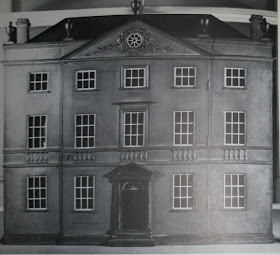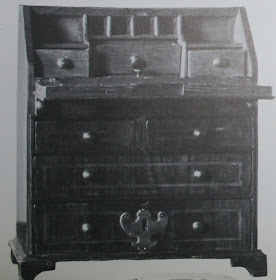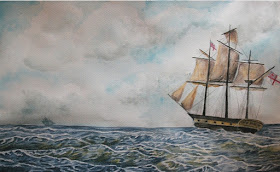Introducing Helen Lashbrook, historian with particular interest in the Second World War, who as a Heyer fan kindly agreed to write a piece about one of those places so dear to Heyer, Austen and anyone who is interested in the Regency. Her excellent potted history takes us from Bath’s inception to its place in England today showing that though the reasons for visiting it might change, Bath has attracted visitors through the ages! Helen’s own blogspot about Edda Mussolini may be found at http://wolfgang20.blogspot.com/ .
Bath – A City for all Ages
Early history
Bath is placed on the edge of the scarp slope on the southern end of the Cotswolds. It lies on a ridge of blue Lias clay, surrounded on three sides by the river Avon. The springs that caused the birth of the city rise up through a fault line in the underlying Carboniferous limestone. There is archaeological evidence for settlements around the site of the city in prehistory; flints & barrows are found across the surrounding hills. Between the 8th & 6th centuries BC there was a communal settlement at Bathhampton about 3 miles from Bath itself. North of the city, at Sion Hill, there is evidence of an Iron Age settlement, with findings of Celtic-style pottery.
Roman bath
Although there is very little evidence to show ritual use of the springs before the arrival of the Romans it is interesting to note that the Roman name for Bath – Aquae Sulis (Waters of Sulis) - was honouring a Celtic goddess, Sulis. This goddess was later transformed into Minerva Sulis, thus conjoining the Celtic goddess with a major deity from the Roman pantheon of gods. Minerva Sulis was viewed as an life-giving mother & as effective agent for curses.
Gilt bronze head of Minerva Sulis found in 1727 – source Wikimedia Commons
When the Romans arrived in England in AD43 they soon decided to create a frontier line guarding the lands they had already subjugated. To link the frontier forts the Fosse Way was built by the Imperial engineers. The Fosse Way crossed the Avon near Bath. There is some evidence to suggest that Acquae Sulis may have originally been a military town, supplied by a military cemetery containing bodies of men, who appear to have died on active service. When the military moved on to new front lines, further north, the settlement remained. Following the Boudicca rebellion in AD60 work began on the creation of the Temple of Sulis Minerva, with baths where pilgrims could bathe in the sacred waters.
Great Bath
Part of hypocaust system
The temple complex was gradually added to over the years, but major modifications were made circa 300AD. The original spring was now roofed over & the complex renovated. Aquae Sulis was a rich town benefitting from the pilgrims from all over Europe, resulting in the building of large domestic dwellings as evidenced by the mosaic floors found during excavations.
In 380AD Emperor Theodosius had proclaimed Christianity as the official religion of the empire, while in 313AD Emperor Constantine had given Christians permission to worship as they chose. How much effect this had on pilgrims attending the shrine of Minerva Sulis is unknown.
But the 4th century AD also saw a defensive wall built around the town as the Roman empire began its period of decline. In 410AD the Emperor Honorarius, in response to a request for help, told the Roman Britons to see to their own defences. The town wall may well have been a response to the Emperor’s inability to defend the outer edges of his empire, but is likely to have been built earlier during the internecine squabbles that tore the empire apart.
Medieval Bath
The loss of the Roman military, withdrawing to support the heart of the empire, meant the collapse of economic, social & political systems that had been in place for nearly five centuries. The Anglo Saxon Chronicles make mention of the Battle of Dyrham in 577AD leaving Bath, Cirencester & Gloucester in the hands of the Saxons. The temple precinct was kept repaired during the 4th century but it would appear that the buildings stood for some hundreds of years, notwithstanding the probable removal of stone & brick for building private dwellings.
Later in the Chronicle we are informed of the sack of Bath by Robert de Mobray, in his rebellion against William Rufus in 1088. After the stamping out of de Mobray’s rebellion William Rufus made John of Tours Bishop of Wells. John of Tours was the driving force behind the new Cathedral started in circa 1091. It was probably built of wood & suffered two fires in the 12th century. It was rebuilt/repaired by Bishop Robert of Lewes. Bishop John, known for his interest in medicine & science, was possibly also responsible for the renovation of the King’s Bath. By 1379 328 persons were listed as living in the city.
The building of the current abbey church was circa 1495- 1503. Queen Elizabeth visited the city twice in 1574 & 1591.
18th Century bath
In the 18th century Bath was still contained within its medieval walls with just over 2000 inhabitants, but within one hundred years the city had changed beyond recognition & new buildings now climbed the hill behind the city. The city population showed a dramatic increase to 28,000.
17th century doctors, eager for business, had touted the benefits of the waters. Princess Anne’s 1692 visit followed in the footsteps of her royal predecessors, who visited Bath seven times during the century. She returned again, as queen, twice in the early years of the new century & in her wake came Richard, Beau Nash who was to create an attraction that brought society to Bath. The main season ran from September to May. In 1746 The Bath Journal records 50 noteworthy visitors, by 1800 that number had increased to 5,341. As the city had lodgings for 12,000 in 1749 the assumption must be that there were many, many more non-notables visiting as well.
Assembly Rooms Bath – source Wikimedia Commons
The Assembly Rooms, as we know them today, were completed in 1771. The original Assembly Room (or Harrison’s Rooms as they were known) was built with a tea room & card room, soon to be joined by a ballroom in 1720.
In 1725, following the news of a scheme to improve navigation along the Avon between Bristol & Bath, the architect John Wood designed a plan to improve Bath. Among various jobs he worked on, prior to the commencement of his grand design, was the plans of a new Assembly Room, opposite Harrison’s Rooms, called Lindsey’s Rooms.
John Wood started his development of Queen’s Square in 1728, finished in 1735. Wood followed this with Kingsmead Square & Beaufort Buildings & three streets. In 1739 he began a development in the curve of the Avon. North Parade & South Parade were part of this development, behind the Abbey. By the time of his death in 1754 Wood had designed the Circus, which was built by his son John Wood the younger and completed in 1758.
Royal Crescent – source Wikimedia Commons
In 1771, the same year as the new Assembly Rooms were completed, Royal Crescent was being finished. At the end of Brock Street, which leads off the Circus, it was designed by John Wood the younger, as an integral part of the Upper Town, with splendid views across the town & valley.
Pulteney Bridge, built by Sir Richard Pulteney, was built between 1769 & 1774. The far side of the river was open land, but Sir Richard’s bridge led to his Bathwick estate centring on Great Pulteney Street & Laura Place. The bridge was based on the design of the Ponte Vecchio & is bordered by shops on either side.
The new Pump Room, including the baths complex, was finished in 1796 by John Palmer, as the city was declining in popularity. They replaced the Pump Room built in 1706 by local builder John Harvey.
The depression of 1793 caused a crash in Bath’s popularity, as banks failed & businesses ran out of capital. The attractions of sea bathing, as practised by the Royal Family, brought seaside towns like Weymouth to public attention. The Prince of Wales built his Royal pavilion in what was a small fishing village called Brighthelmstone & the re-named Brighton became somewhere to spend the summer season.
In 1814 rich visitors started flocking to enjoy the pleasures of abroad, interrupted for only a short time by the escape of Napoleon from Elba. The wealthy British had been forced to holiday at home by a French blockade starting in 1793. Now only the unfashionable were staying at home .
Bath today
Much of Regency Bath was destroyed in the 1960’s & soulless buildings replaced the Georgian classical houses. It is fortunate that some of the battles for Bath’s heritage were won, leaving Bath a World Heritage Site.
Bath today is a thriving tourist town & host to, not only Bath University founded in 1966 by Royal Charter, but also the much newer Bath Spa University founded in 2005. The Assembly Rooms now house a Museum of Costume & the Pump Room & Roman Baths are the heart of the tourist industry.
The mineral baths were closed in 1978 as the water became infected with amoebic protozoa, which lead to amoebic meningitis, causing the tragic death of a young girl. In the late 1990s funding was given by the Millennium Commission to re-create a spa in Bath, using the mineral rich waters that gave rise to the Roman complex.
Bibliography
The City of Bath – Barry Cunliffe, Alan Sutton 1986
AA Book of British Towns Drive Publications 1982
The Anglo-Saxon Chronicles translated by Anne Savage Colour Library Books 1995
All photographs unless otherwise attributed courtesy of JD Lashbrook




















